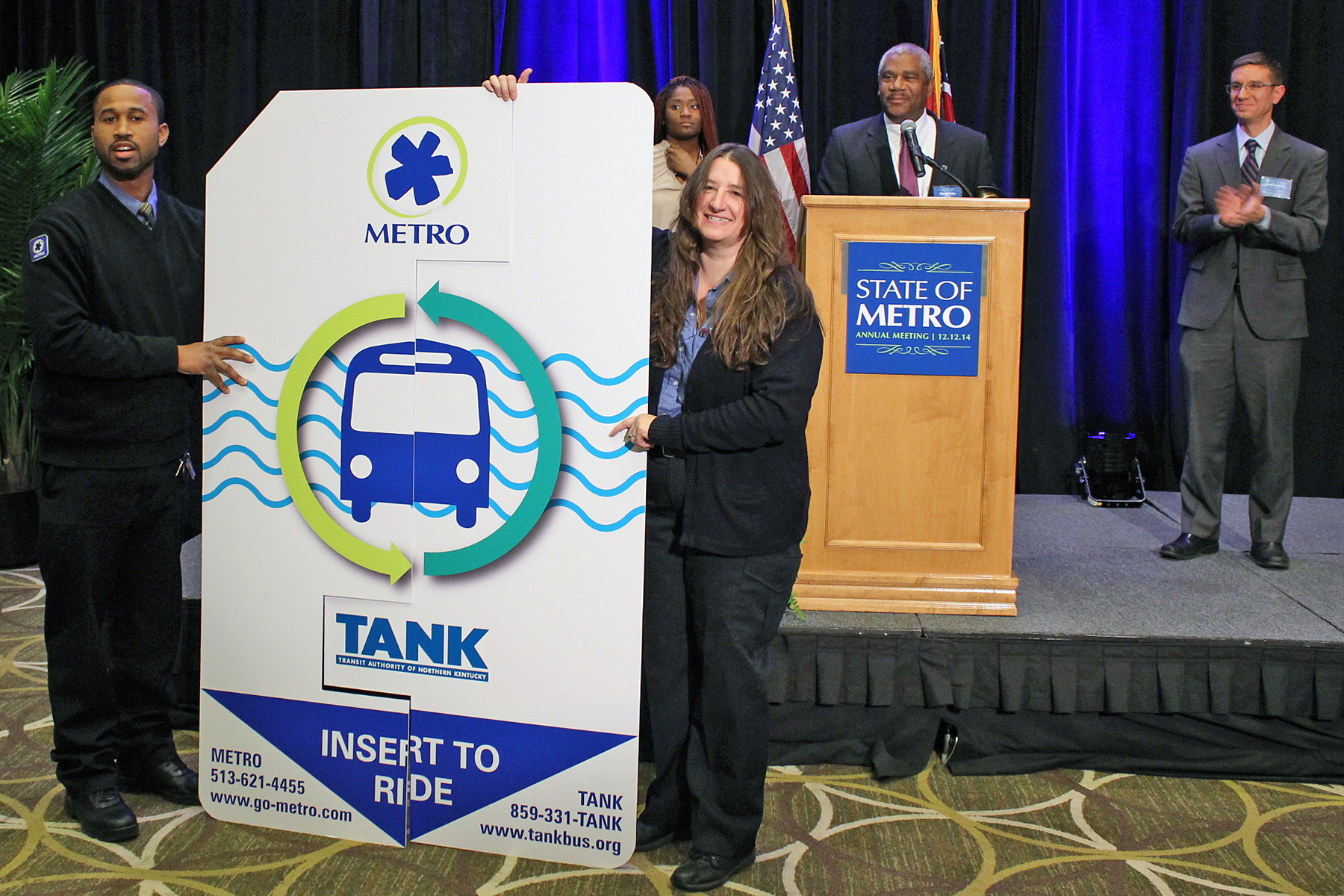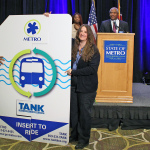Regular commuters who cross the Ohio River, either into Cincinnati or Northern Kentucky, are well aware of bringing the required amount of change to transfer between Metro and TANK buses. Other non-seasoned riders, however, were stuck with navigating a complex combination of transfer fees and payment options.
The region’s two largest transit agencies announced that technology afforded to them in 2011 will support the introduction of a long-anticipated regional fare payment card. Metro unveiled the shared stored-value card earlier this month at The Westin’s Presidential Ballroom during the annual State of Metro address.
Transit officials say that the card works with both TANK and Metro buses, thus eliminating the need for carrying change on either system. The card deducts the correct fare amount for each agency so if a rider boards a Metro bus it will deduct $1.75 for Zone 1 or $1.50 for a TANK bus fare.
“We are trying to make this a more seamless and integrated approach to transit.” Metro spokesperson Sallie Hilvers told UrbanCincy.
While there already is a monthly pass that can be used for both systems, the pass is limited to rides on TANK and Metro buses within Cincinnati city limits. As a result, officials from Metro and TANK believe the new shared stored-value card provides better accessibility and flexibility to people who use both systems on both sides of the river.
Behind the scenes, Metro handles the accounting for the stored-value cards so if the card is used on a TANK bus, the agency reports that usage to Metro, which then reimburses TANK for the fare.
“We’ve seen more people buying day passes and stored value passes since we introduced them.” Hilvers said.
The pass is available for purchase online, and at the 24-hour ticketing kiosks Metro began installing earlier this year. TANK’s Covington Transit Center is not yet selling the new stored-value cards, but transit officials there anticipate it becoming available in the near future.
This kind of collaboration is not what has traditionally defined the relationship between Metro and TANK, but Hilvers said that this has been years in the making and hopes that it will lead to even more collaboration in the future.
According to Hilvers, the next goal is to work with local universities to develop a standard student and faculty card that would cover access to area institutions served by both transit agencies. Currently Metro has separate agreements with the University of Cincinnati and Cincinnati State, while TANK has an agreement with Northern Kentucky University.
Such changes would seem to bode well for both Metro and TANK. In 2013, Metro reported surging ridership due to the implementation of new collaborative programs and improved fare payment technology.
While the new technology and services are a step toward a broader overhaul of the way area residents and visitors pay for and use the region’s transit networks, it is still a ways from what is considered industry best practices.
Leadership at the Southwest Ohio Regional Transit Authority (SORTA), which oversees Metro bus and streetcar operations, says that they are working on ways for riders to get real-time arrival information system-wide.
The challenge, they say, is to make sure it is a benefit available to all users. Therefore, transit officials are working to implement real-time arrival information that utilizes smartphone, adaptive website and phone service technologies. Metro representatives are tentatively saying that they are hopeful such services could be in place by spring 2015.

